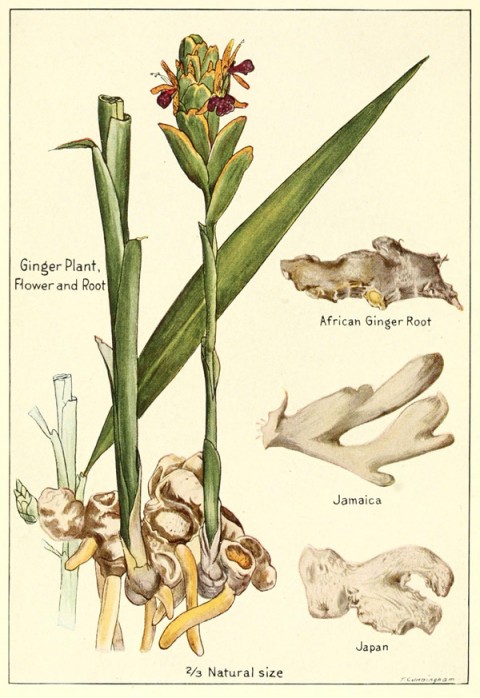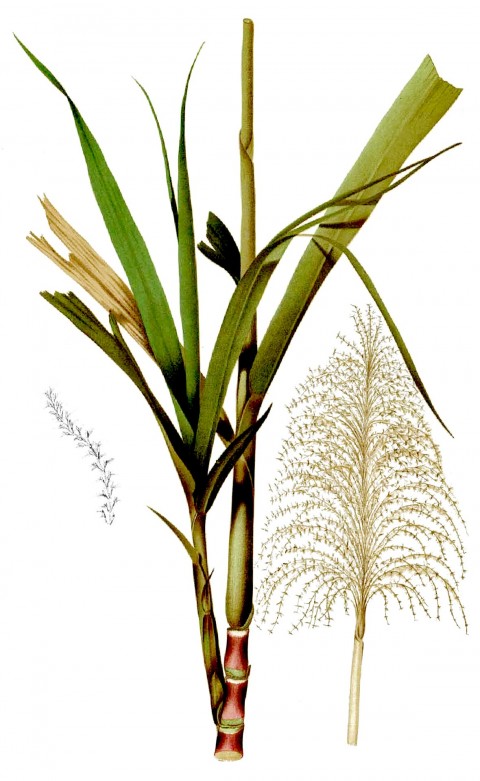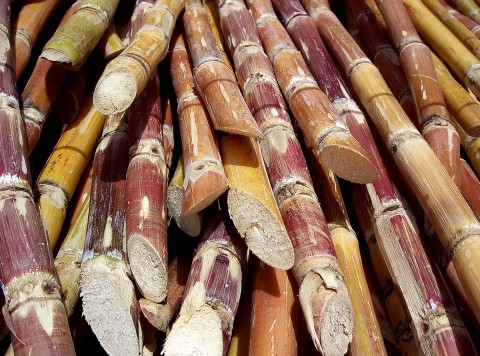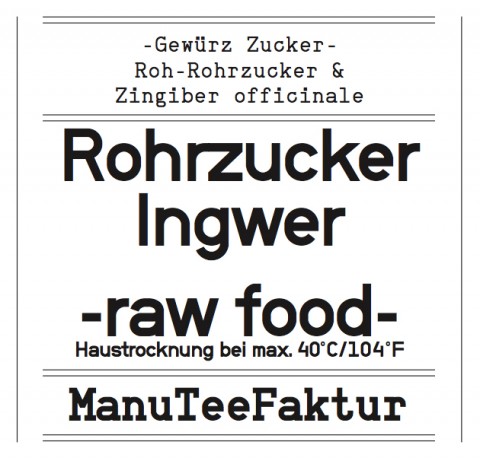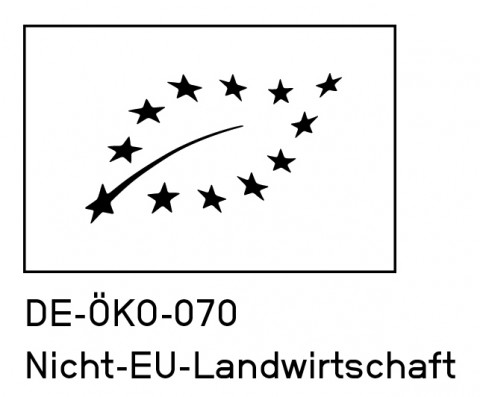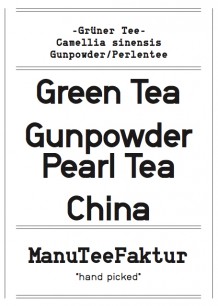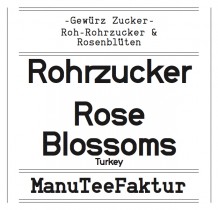Cane sugar & ginger
From: €6.50
CANE SUGAR & GINGER
SACCHARUM OFFICINARUM & ZINIGIBER OFFICIANALE
INIGIBER OFFICIANALE
RAW FOOD - the ginger is HOME DRIED at the ManuTeeFaktur at a temp. of max. 40ºC/104ºF
GINGER is the rhizome of the plant Zingiber officinale, consumed as a delicacy, medicine, or spice. It lends its name to its genus and family (Zingiberaceae). Other notable members of this plant family are turmeric, cardamom, and galangal. Ginger cultivation began in South Asia and has since spread to East Africa and the Caribbean.
The English name ginger comes from French: gingembre, Old English: gingifere, Medieval Latin: gingiber, Greek: zingíberis (ζιγγίβερις). Ultimately the origin is from Tamil word ‘inji ver’ (இஞ்சி வேர்) or Malayalam word ‘inji veru’ (ഇഞ്ചി വേര്). The botanical term for root in Tamil is ver (வேர்) and Malayalam is veru (വേര്), hence inji root or inji ver.
Ginger tea is a beverage in many countries, made from ginger root. In China, the tea is made by boiling peeled and sliced ginger to which brown sugar is often added. Sliced orange or lemon fruit may also be added to give a flavor, and it may be consumed both hot or cold. In Korean cuisine, ginger tea is called saenggang cha (생강차). It can be made either by boiling the ginger or by mixing hot water and preserved sweetened ginger. For the latter, sliced ginger root is stored with honey for a few weeks like jam. In Japanese cuisine it is called shōgayu (生姜湯). In Philippine cuisine it is called salabat and served in the relatively cold month of December. From its main ingredient ginger tea derives a flavor that is spicy and stimulating. Ginger, known as Adarak in Hindi, is used frequently in tea made in all parts of India as well.
http://en.wikipedia.org/wiki/Ginger
Foto:
http://commons.wikimedia.org/wiki/File:Ginger-plant-flower-root.png
SUGAR CANE
SACCHARUM OFFICINARUM
Sugarcane, or Sugar cane, is any of six to 37 species of tall perennial true grasses of the genus Saccharum, tribe Andropogoneae, native to the warm temperate to tropical regions of South Asia. The world demand for sugar is the primary driver of sugarcane agriculture.
In India, between the sixth and fourth centuries BC, the Persians, followed by the Greeks, discovered the famous “reeds that produce honey without bees”. They adopted and then spread sugar and sugarcane agriculture. A few merchants began to trade in sugar—a luxury and an expensive spice until the 18th century. Before the 18th century, cultivation of sugar cane was largely confined to India. Sugarcane plantations, like cotton farms, were a major driver of large human migrations in the 19th and early 20th century, influencing the ethnic mix, political conflicts and cultural evolution of various Caribbean, South American, Indian Ocean and Pacific island nations.
Crystallized sugar was reported 5,000 years before the present in the Indus Valley Civilization, located in modern-day Pakistan and north India.Around the eighth century AD, Arab traders introduced sugar from South Asia to the other parts of the Abbasid Caliphate in the Mediterranean, Mesopotamia, Egypt, North Africa, and Andalusia. By the 10th century, sources state that there was no village in Mesopotamia that did not grow sugarcane. It was among the early crops brought to the Americas by the Andalusians from their fields in the Canary Islands, and the Portuguese from their fields in the Madeira Island.
Boiling houses in the 17th through 19th centuries converted sugarcane juice into raw sugar. …
http://en.wikipedia.org/wiki/Sugar_cane
Foto:
http://commons.wikimedia.org/wiki/File:Cut_sugarcane.jpg
http://www.google.de/imgres?imgurl=http://upload.wikimedia.org/wikipedia/commons/thumb/a/a0/Saccharum_officinarum_Blanco1.18.jpg/160px-Saccharum_officinarum_Blanco1.18.jpg&imgrefurl=http://sk.wikipedia.org/wiki/Cukrov%25C3%25A1_trstina&h=243&w=160&sz=10&tbnid=zz6yA5-bMBjTvM:&tbnh=82&tbnw=54&zoom=1&usg=__30KDOxTCrMedzs8Lu7wjgRPkPUA=&docid=Ijc7zJA5YnfqtM&hl=de&sa=X&ei=02xVUZz1McfEtAbqtYDQDA&ved=0CD8Q9QEwAg&dur=333
USE IT FOR SWEETING:
- crêpe & galette
- waffles
- fruit salats
- yoghurt, cereals & muesli
- fresh baked pastries like: cakes & biscuits
- pancakes
- tea & coffee
… or just to sweeten the day!
- - - - - - - - - - - - - - - - - - - - - - - - - - - - - -
S: 200g / M: 600g
SHIPPING COSTS:
>2kg: 4,10€ Germany/8,90€ EU/15,90€ World (Zone-I)
>5kg: 6,99€ Germany/16,99€ EU(Zone-I)/29,99€ World(Zone-II)
Additional Information
| Size | Small, Medium |
|---|

